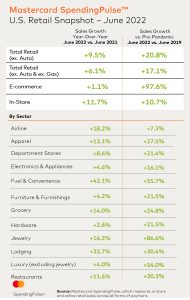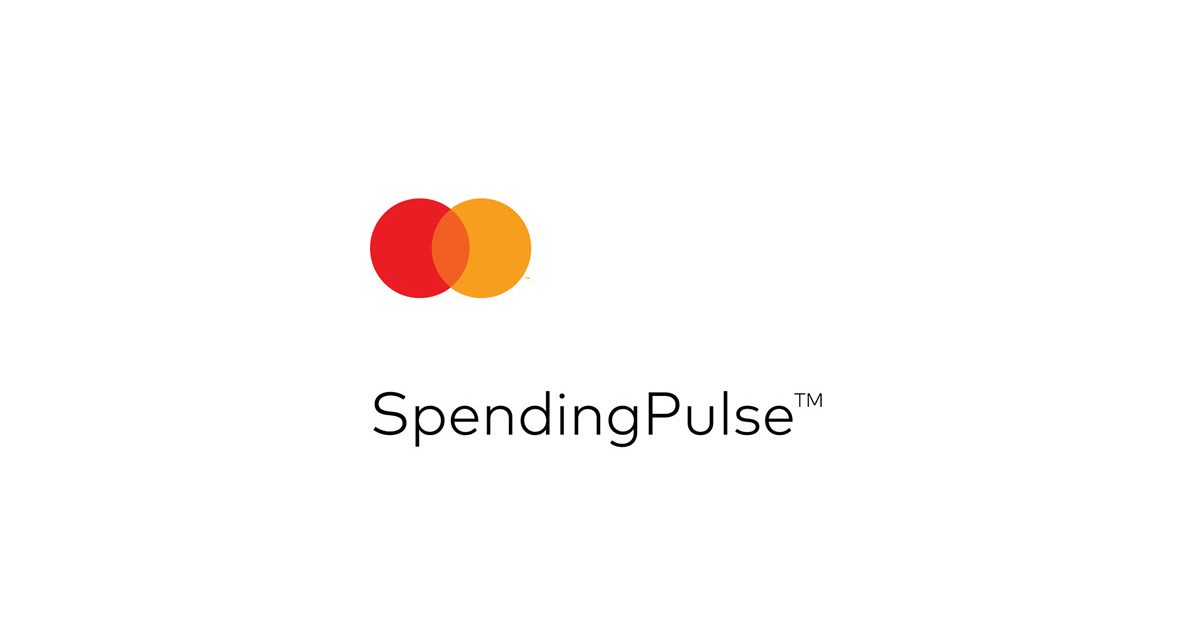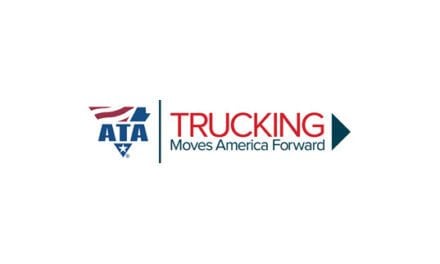 According to Mastercard SpendingPulse, which measures in-store and online retail sales across all forms of payment, U.S. consumer retail spending excluding automotive increased +9.5% year-over-year (YOY) in June, while retail sales excluding auto and gas rose +6.1% YOY. Rising prices—particularly for necessities such as food and fuel—were a contributing factor, as Mastercard SpendingPulse reflects nominal spending and is not adjusted for inflation. Excluding auto and gas, in-store spending is up +11.7% YOY in June, and while e-commerce grew at a slower pace this month (+1.1% YOY), sales for e-commerce remain roughly double June 2019 levels. Nominal spending growth is down slightly compared to May, though remains consistent with growth levels seen earlier in 2022.
According to Mastercard SpendingPulse, which measures in-store and online retail sales across all forms of payment, U.S. consumer retail spending excluding automotive increased +9.5% year-over-year (YOY) in June, while retail sales excluding auto and gas rose +6.1% YOY. Rising prices—particularly for necessities such as food and fuel—were a contributing factor, as Mastercard SpendingPulse reflects nominal spending and is not adjusted for inflation. Excluding auto and gas, in-store spending is up +11.7% YOY in June, and while e-commerce grew at a slower pace this month (+1.1% YOY), sales for e-commerce remain roughly double June 2019 levels. Nominal spending growth is down slightly compared to May, though remains consistent with growth levels seen earlier in 2022.
As inflation persists, consumers are paying more for essentials. Two of the categories that have higher inflation have seen a lift in sales: June sales for Fuel & Convenience are up +42.1% YOY/ +55.7% YO3Y and Grocery +14% YOY/ +24.8% YO3Y.
Meanwhile, discretionary spending continued to drive growth across the fashion-forward sectors in June, including Jewelry +16.2% YOY/ +86.6% YO3Y, Luxury +4%/ +54% YO3Y and Department Stores +8.6% YOY/ +21.4% YO3Y. And with summer in full swing, consumers continue to spend on travel experiences: Airline and Lodging are both up +18.2% YOY/ +7.3% YO3Y and +33.7% YOY/ 30.4% YO3Y, respectively.
“Sector by sector, we’re seeing a varied picture of how inflation is impacting essential vs discretionary consumer spending,” said Steve Sadove, senior advisor for Mastercard and former CEO and Chairman of Saks Incorporated. “One notable highlight is that travel sectors such as airlines and lodging continue to show signs of strong demand.”








